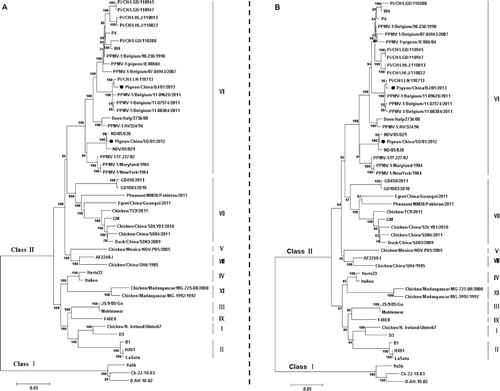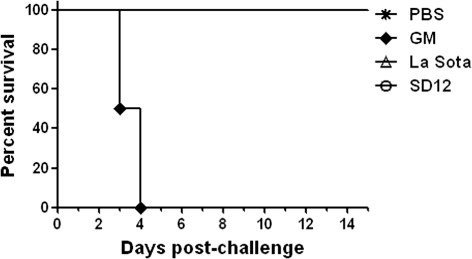Figures & data
Table 1. Experimental infection: chicken groups and viruses used.
Table 2. Details of the two PPMV-1 isolates investigated in this study.


Table 3. Virus shedding in cloacal swabs as indicated by RT-PCR.
Table 4. Viral distribution in tissues of chickens inoculated with SD12, GM and LaSota.



